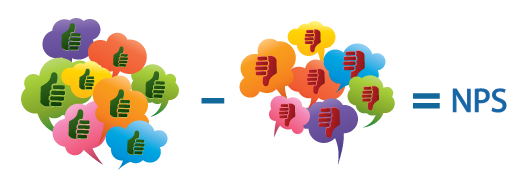Multifamily Blogs
NPS Lessons Learned
NPS Lessons Learned
Companies are hungry for information and eager to learn what their customers’ value; to learn more, many are offering surveys. One popular method is the Net Promoter Score (NPS) concept. NPS is a methodology that comes from the service industry, and is described in detail by Fred Reichheld in his book The Ultimate Question 2.0. The beauty of the NPS methodology is the simplicity as customers respond to one question; on a scale of 0-10 “How likely is it that you would recommend [your company] to a friend or colleague?” The score is calculated by subtracting the detractors (the percentage of respondents who scored 0-6) from the promoters (those who scored 9-10). Respondents are typically also offered a chance to further explain their response and offer feedback to the organization in free text field.
![]() The information gleaned from this simple survey provides real-time feedback that is actionable and operational in nature, and is truly representative of the customer’s experience. However, when introducing surveys into an organization there are a number of important things to consider, including the following lessons learned:
The information gleaned from this simple survey provides real-time feedback that is actionable and operational in nature, and is truly representative of the customer’s experience. However, when introducing surveys into an organization there are a number of important things to consider, including the following lessons learned:
1. Respond to surveys. Before surveys are launched, have a process in place for responding. Include items like response timelines and a plan for which surveys will be responded to (e.g. do associates respond to all surveys, only those who request a follow-up, surveys with exceedingly high or low scores, or those in the middle?). No matter what the decision, it is important to start with a pilot group to ensure that the process is effective before implementing throughout the organization. It is also important to include a process for escalation if the customer requests it. This creates a culture where feedback is embraced as a ‘gift’ instead of one where problems are hidden or blame is passed to others.
2. Empower associates to own the feedback as expressed by the customer, and if possible discuss and offer a solution as they follow-up. Customers do not like being told “it's not my problem” but don't mind hearing the words “I don't have the answer but I will personally follow up with you to discuss a solution.”
3. Explain the NPS calculation and survey questions to everyone in the organization, and discourage 'asking' for a particular score. Explain the value of feedback and the philosophy of continuous improvement
4. Review trends and look at the big picture. Teams often focus on one or two surveys but do not step back to look at systemic problems at the community. Incorporate a process where teams meet to discuss survey feedback and find the trends across multiple surveys.
5. It is important to not focus on the score, but instead consider the value of the experience of the customer. Look at the trends, not just the score itself. Trends tell us whether perceptions are improving or deteriorating which is often more important than the raw score itself.
6. Compensation related to NPS sores can be tricky. Depending on the number of surveys received for an individual location there can be a lot of volatility of the scores. Consider waiting to tie compensation to the scores until benchmarks are determined.
7. Create a process at the corporate level to regularly evaluate the survey methodology and questions. Consider elements such as email vs. phone, survey questions, number of responses, trends, benchmarks, etc.
Survey feedback goes beyond hearing what customers are saying to actually listening; then taking what is heard, deriving meaning and intent, and turning it into action. Organizations that do this have a significant advantage as they create value for their customers.


